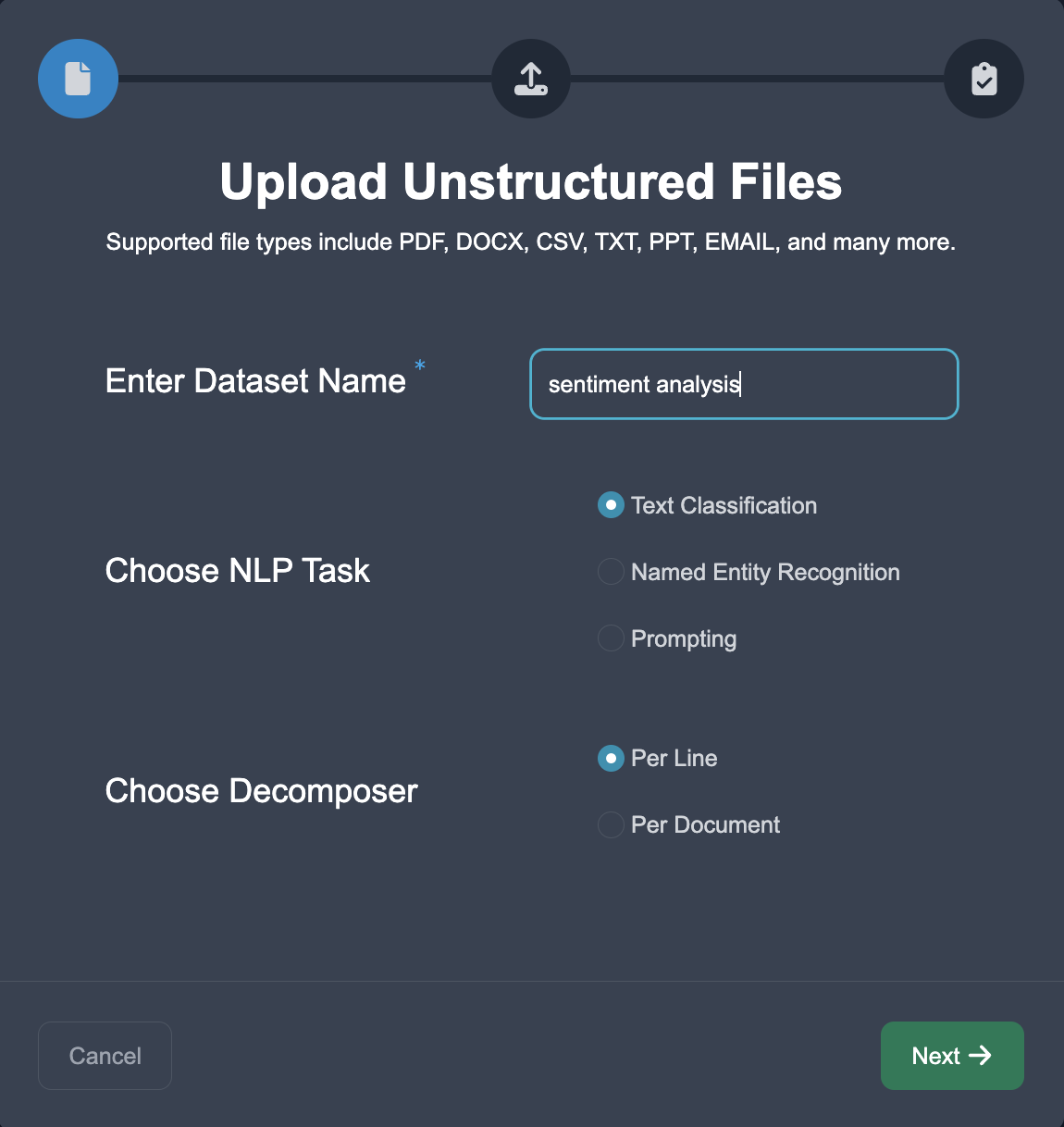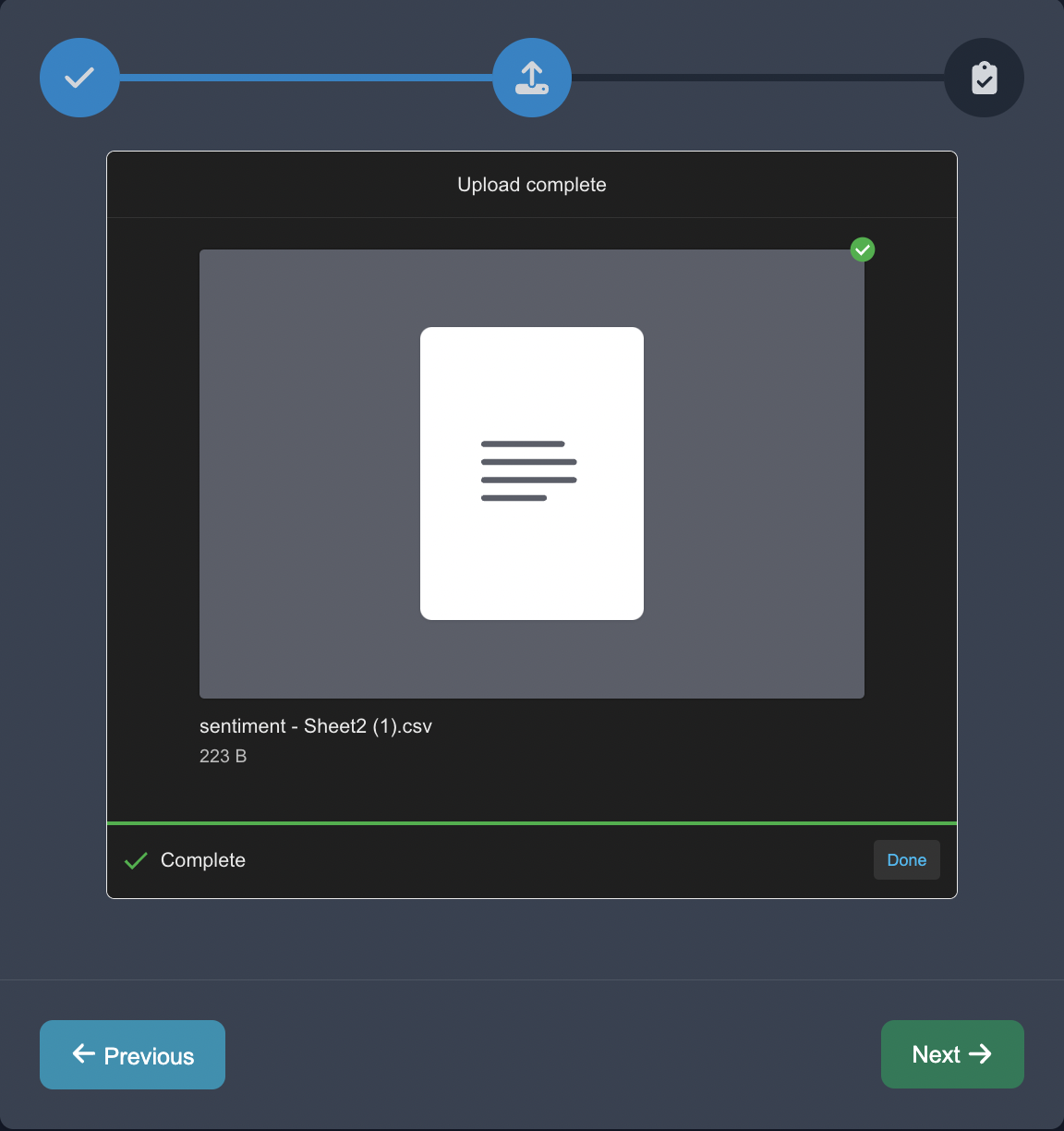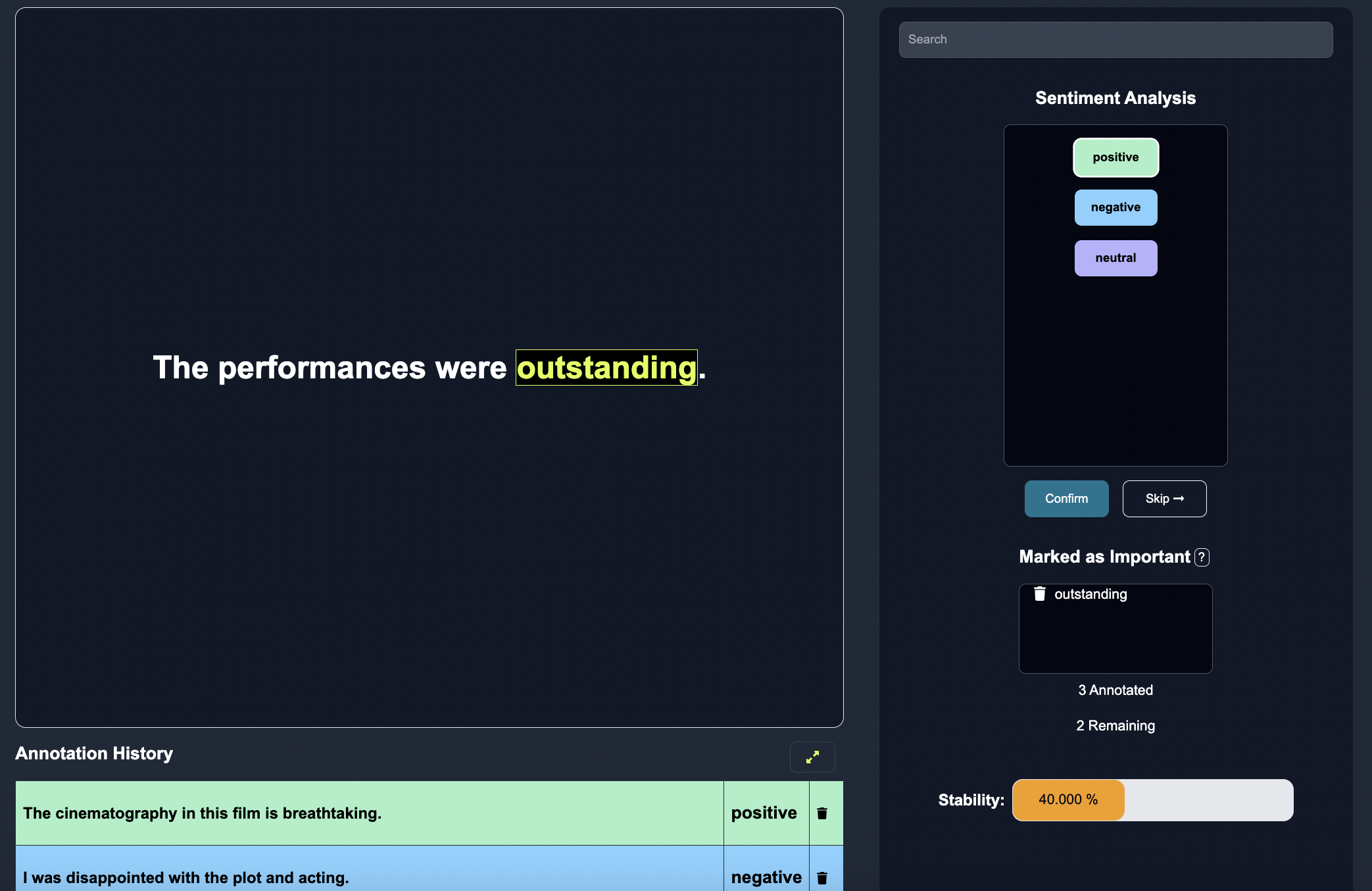Sentiment Analysis
Sentiment analysis is a specific type of text classification that focuses on determining the sentiment or emotion expressed in a given text document. In this example, we will demonstrate how to use Anote, a text annotation tool, to perform sentiment analysis on a dataset of movie reviews from Rotten Tomatoes. Our goal is to classify each movie review into one of the following sentiment categories: positive, negative, or neutral.
Dataset
The dataset consists of movie reviews collected from Rotten Tomatoes. Here are a few examples of the movie reviews:
| Review |
|---|
| This movie was absolutely fantastic! Highly recommended. |
| I was disappointed with the plot and acting. |
| The cinematography in this film is breathtaking. |
| Mediocre movie, nothing special. |
| The performances were outstanding. |
The reviews reflect users' opinions and feedback about movie, which we want to categorize by sentiment. To do this, we analyze the sentiment of each review and assign it to one of the following categories.
| Sentiment |
|---|
| Positive |
| Negative |
| Neutral |
Using Anote
To perform sentiment analysis on these movie reviews, we can follow these steps using Anote:
Upload Data: Start by uploading the movie review dataset into Anote. We upload the CSV in Unstructured format, choose the NLP task of Text Classification, and choose the per line decomposition.


Customize Categories: In the annotation interface, we want to set up the sentiment categories as listed above. We customize the sentiment categories in Anote's configuration settings by pressing the + Add button to add category Positive, Negative, and Neutral one by one.

Annotate a Subset of Reviews: Anote provides an intuitive interface where we can view the movie reviews that the model is least certain about, and annotate the edge cases with one of the defined categories above. On Anote, we label few rows of data by choosing a category and clicking the "confirm" button.

Export Annotated Subset: Once the annotation process for the subset of data is complete, we export the annotated subset of results from Anote. We download the CSV of the annotated data along with the assigned sentiment categories.

Conclusion
By using Anote, we can efficiently perform sentiment analysis on movie reviews from Rotten Tomatoes. By uploading the dataset, customizing the sentiment categories, annotating a subset of reviews, and exporting the predicted dataset as CSV, we can generate labeled data for training sentiment analysis models to gain insights from the movie review data.
